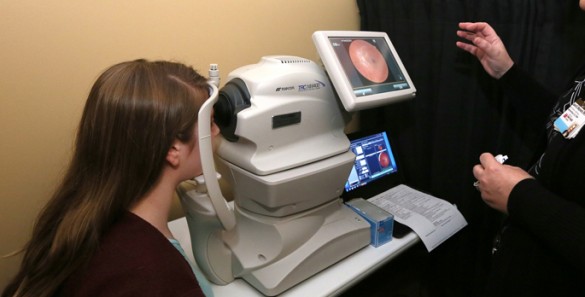
Diabetic retinopathy (DR) – caused by changes in the blood vessels of the retina – is a leading cause of blindness in American adults. To develop strategies for identifying individuals at risk for DR, Milam Brantley, M.D., Ph.D., David Samuels, Ph.D., and colleagues determined if specific mitochrondrial gene “signatures” – called haplogroups – associated with DR.
The investigators tested samples from Caucasian patients with DR obtained from BioVU, Vanderbilt’s de-identified DNA databank with linked clinical information. They validated the findings in an independent cohort of Caucasian DR patients from the Vanderbilt Eye Institute.
They report in the September issue of Investigative Ophthalmology & Visual Science that DR patients from mitochondrial haplogroup H were more likely to have advanced proliferative DR (PDR) while patients from haplogroup Uk were less likely to have PDR. The haplogroups were as strong a risk factor for PDR as elevated hemoglobin A1c levels, suggesting that haplogroup analysis may be a useful biomarker for DR severity and that it could guide early intervention strategies.
The collaborative research study was supported by grants from the National Institutes of Health (EY022618, EY008126, TR000445, GM092618, HG004603), the International Retinal Research Foundation and Research to Prevent Blindness.
Send suggestions for articles to highlight in Aliquots and any other feedback about the column to aliquots@vanderbilt.edu














